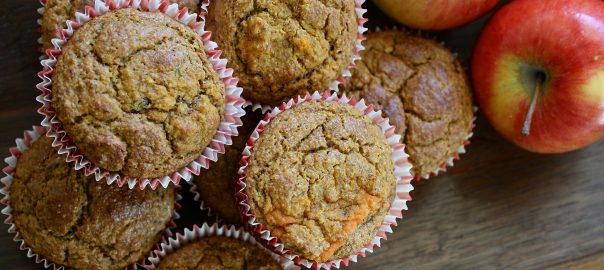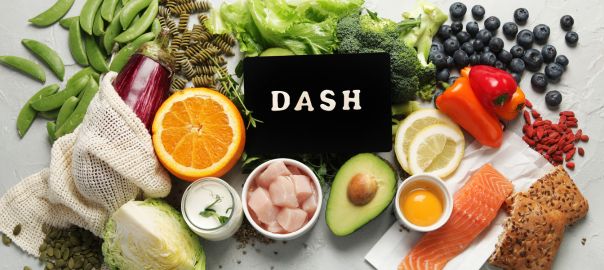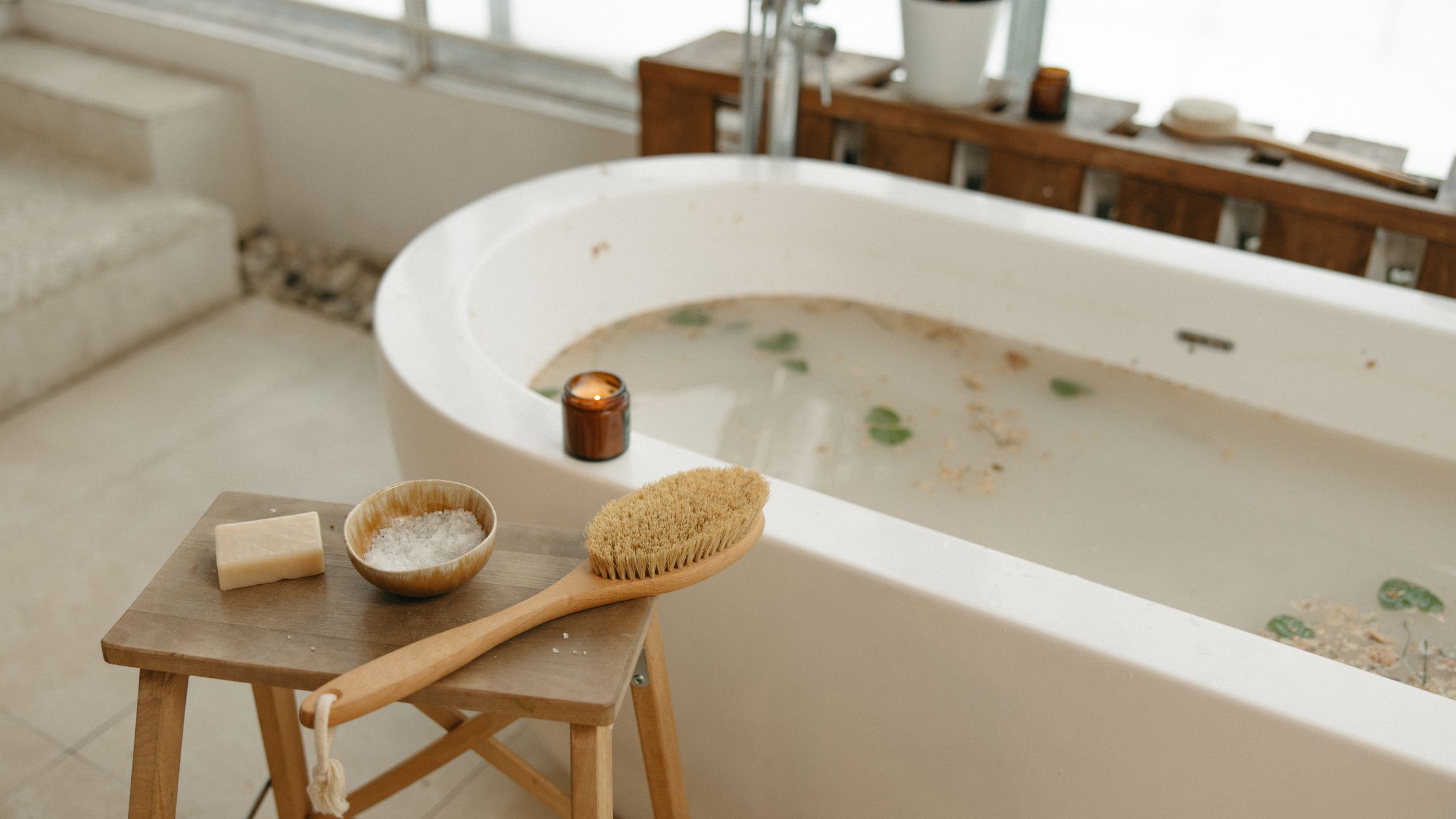Today's blog entry is a guest post written by my Aunt Carol (and yes that's capitolized because I think she's “just capital”). She'd sent these musings to me as an email but I loved it so much I wanted to share her thoughts with all of you. With her permission here they are:
Your article on sequential eating is an affirmation of the way that I've been cooking all my adult life.
Mystery Dinners
When our children were small I used to save the empty trays from tv dinners, putting leftover entree portions in the main compartments, add some frozen vegetables, half a baked potato, leftover pie filling in the dessert compartment, etc. I would serially fill the various compartments when I'd have the appropriate leftovers. Then cover each tray with aluminum foil* – I did not mark what was inside, who had the time for nice details like that? 🙂 When Yosef and I went out to dinner, our kids had the treat of choosing a “mystery tray” – a wholesome form of gambling (but pretty safe because they were meals that they already liked anyway) and each one would be getting something different. The babysitter would heat them up and our kids had exciting meals, telling us the next morning what each one had had (I never heard about trades, though that might have been possible).
I imagine that like you, most of your readers, still having one or more children living at home, prepare meals for families. As an older widow with occasional guests, I often freeze part of the cooked ingredients for a recipe before assembling let's say half of the total recipe, I also freeze individual portions of stews or soups, or what will in future be pot pies or Shephard's pies, so that they'll be ready for the crust or mashed potato topping when I am making those things for other meals.
Quiche
The dishes that I do not like to freeze and defrost later are quiches (they get soggy and the vegetables get too soft when frozen, defrosted then reheated). I make mine crustless, just rubbing a bit of butter around the bottom of the round flat pan, to grease it, sprinkling on a layer of bread or toast crumbs before adding the sauteed vegetables, grated cheese, and then the custard. I try to plan to first serve this entree when I have guests coming over. However since this is an easy and favorite dish with me, I sometimes grate different kinds of cheese (another good use for leftovers) on different portions. I usually cut my quiche into wedges and may decide that half will be cheddar, and half Swiss, etc. I change the side dishes during the subsequent days — a baked potato, reheated grain with spices, or different salads. This makes for a tasty variety and is an easy way to use up leftovers.
Sharing Leftovers
What is even more delightful is that I have a friend to whom I often give a portion or two of something tasty that I have prepared; she does the same with me. This way we both have more variety in our meals. What I give to her often becomes a treat for lunch at home, before she leaves to teach at the university; what she gives to me becomes a delicious, surprise dinner. As you can anticipate–we also share many recipes, enjoying one an other's tastes in food and both being whole grain, organic food enthusiasts. Many people think of inviting friends over for a meal, but sharing dishes to be eaten at home is also a generous, friendly gesture and fits well into the full life of commitments that many of us choose these days. It does not replace sharing sit down meals with guests, it's rather a personal-catering-with-love, service.
I want to explain that it's not a one-on-one direct exchange–I give her A so she gives me B. Rather when, for example I baked muffins (and I'd been explaining to her son the difference between cupcakes which are a new treat to most Israelis – a few enterprising women have even opened successful delivery of home-baked cupcakes for special events services- and muffins), I saved and froze a few of my last batch of corn muffins that contain niblets. Then when I baked oat-berry muffins with raisins and maple syrup, I packaged up a few of each, along with a baked apple and some chestnuts and gave them to her when we next met.
A few days later when we again met she brought me a wedge of a delicious cake she'd baked that contained chunks of apple and some grapes in the batter and gave me a jar of her homemade granola – which I plan to sprinkle on a sliced banana, top with yogurt then enjoy for breakfast.
Savoring the cake with a cup of tea, enjoying this breakfast gift, these are, to me, like little hugs.
I found the part about cupcakes and muffins interesting. Who knew that there were people who didn't know about cupcakes? And I love muffins. They're actually one of my favorite ways to use up leftover food items; I'm a fan of both savory and sweet muffins. The most genius way ever to make muffins is using Amy Dacyzyn, The Tightwad Gazette's, amazing recipe
- 2 to 2-1/2 cups grain
- 1 cup milk (or other liquid)
- Up to 1/4 cup fat
- 1 egg
- Up to 1/2 cup sweetener
- 2 tsp. baking powder
- 1/2 tsp. salt
- Up to 1-1/2 cups additions
- Grain: Use 2 to 2-1/2 cups of white flour.
- Or substitute oatmeal, cornmeal, whole-wheat flour, rye flour, or flake cereal for 1 cup of the white flour.
- Or substitute 1 cup leftover cooked oatmeal, rice, or cornmeal for 1/2 cup of the white flour and decrease liquid to 1/2 cup.
- Milk: Use 1 cup. Or substitute buttermilk or sour milk (add a tablespoon of vinegar to 1 cup milk).
- Or substitute fruit juice for part or all of the milk.
- Fat: Use 1/4 cup vegetable oil or 4 Tsp. melted butter or margarine.
- Or substitute almond for part or all of the fat.
- The fat can be reduced or omitted with fair results if using a wet addition.
- Egg: Use 1 egg. Or substitute 1 heaping T. of ground flaxseed and 1 T. of water.
- If using a cooked grain, separate the egg, add the yolk to the batter, beat the white until stiff, and fold into the batter.
- Sweetener: Use between 2 Tsp. and 1/2 cup sugar.
- Or substitute up to 3/4 cup brown sugar.
- Or substitute up to 1/2 cup honey or molasses, and decrease milk to 3/4 cup.
- Baking Powder: Use 2 tsp. If using whole or cooked grains or more than 1 cup of additions, increase to 3 tsp.
- If using buttermilk or sour milk, decrease to 1 tsp. and add 1/2 tsp. baking soda.
- Salt: Use 1/2 tsp., or omit if you have a salt-restricted diet.
- The following ingredients are optional.
- Additions can be used in any combination, up to 1-1/2 cups total.
- If using more than 1 cup of wet additions decrease the milk to 1/2 cup.
- Dry Additions: Nuts, sunflower seeds, raisins, coconut, etc.
- Moist Additions: Blueberries, chopped apple, freshly shredded zucchini, shredded carrot, etc.
- Wet Additions: Pumpkin puree, applesauce, mashed, cooked sweet potato, mashed banana, mashed cooked carrot, etc.
- If using 1/2 cup drained, canned fruit or thawed shredded zucchini, substitute the syrup or zucchini liquid for all or part of the milk.
- Spices: Use spices that complement the additions such as 1 tsp. cinnamon with 1/4 tsp. nutmeg or cloves.
- Try 2 tsp. grated orange or lemon peel.
- Jellies and Jam: Fill cups half full with a plain batter.
- Add 1 tsp. jam or jelly and top with 2 more Tsp. batter
- Non-sweet Combinations: Use only 2 Tsp. sugar and no fruit.
- Add combinations of the following: 1/2 cup shredded cheese, 2 Tsp. grated onion, 1/2 cup shredded zucchini, 2 Tsp. parmesan cheese.
*These days we know that aluminum foil is not a great choice for food contact. It does happen to be, however, a great way to protect foods in the freezer. My suggestion is to put a layer of parchment paper or freezer paper on top of the food and then wrap it in aluminum foil. Remove both the paper and the foil before reheating.










